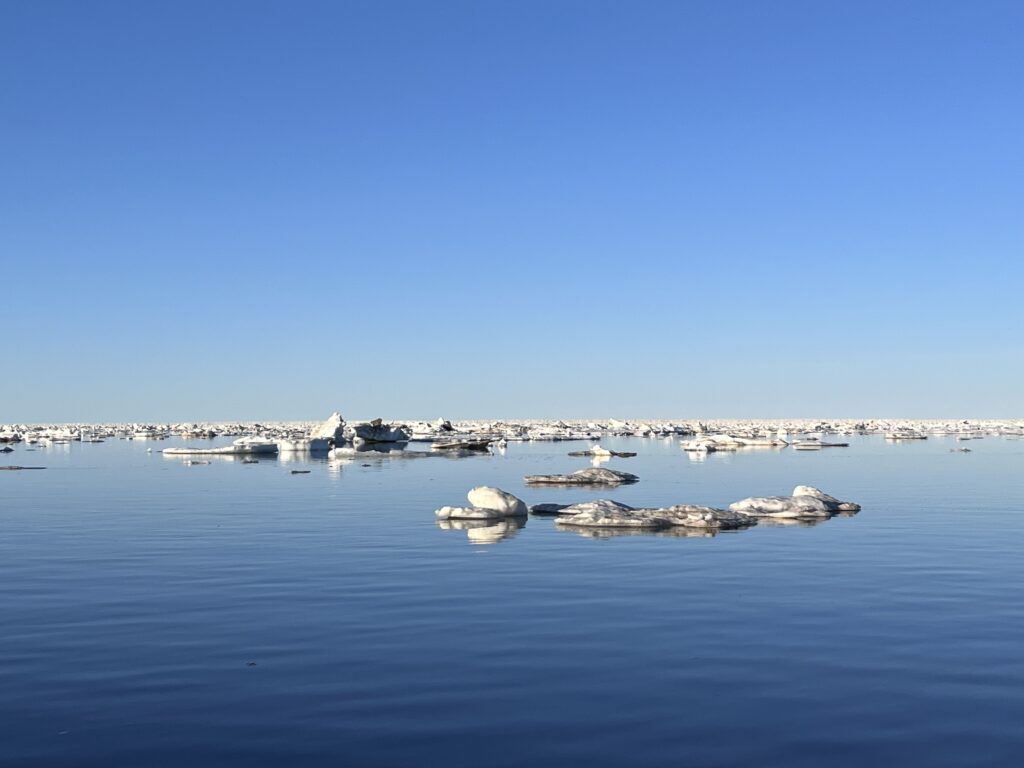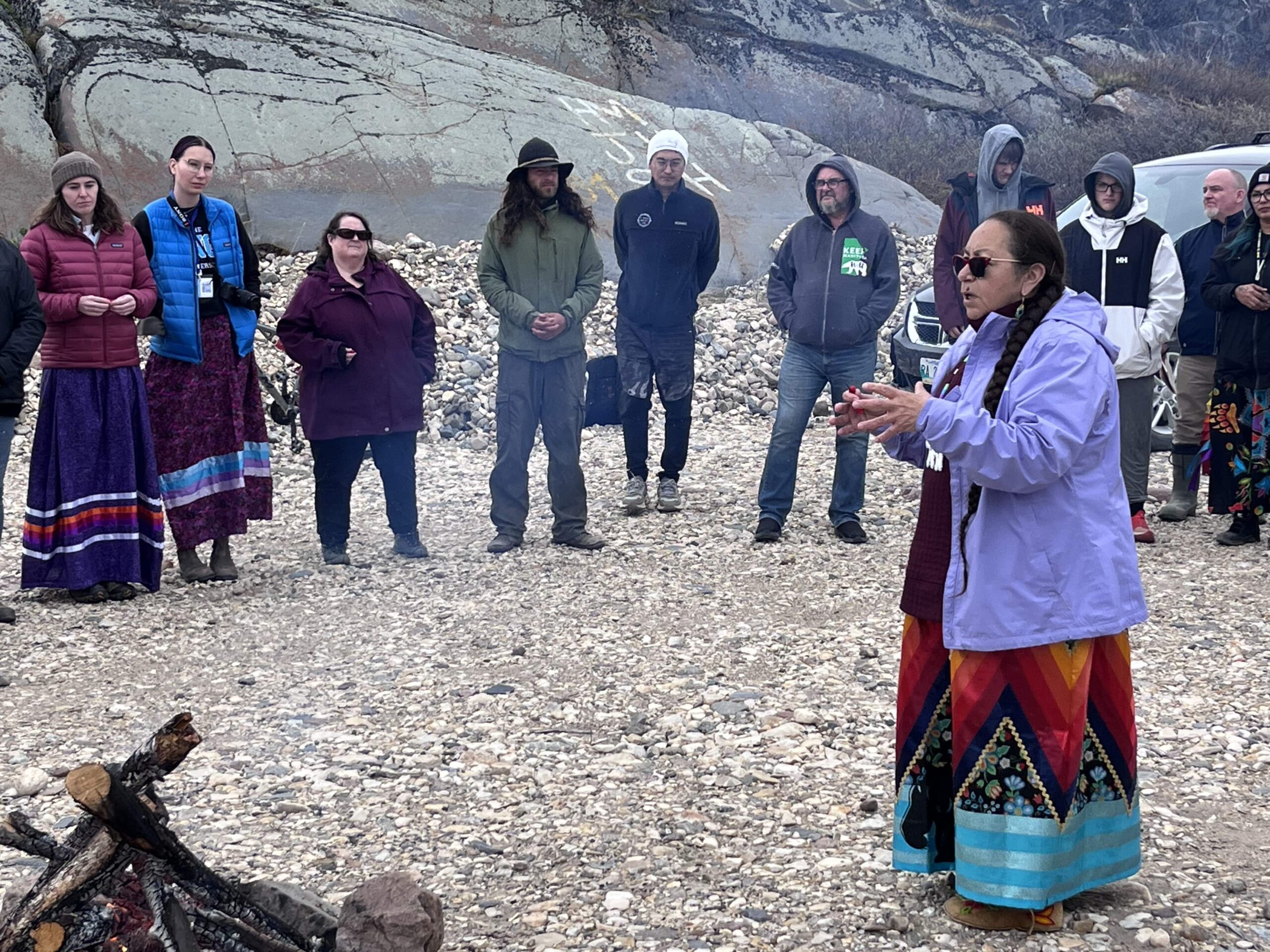
By Mira Oberman, Director of Communications and Public Programs, CPAWS Manitoba
For the first time in living memory, dozens of Churchill residents and visitors gathered on the shore of Hudson Bay for a traditional water ceremony to honour the life-giving abundance of the Big Water.
It was an incredibly meaningful way to anchor a series of events aimed at exploring opportunities to secure a healthy future for Hudson Bay on June 19-20, 2024.
Events ranging from the water ceremony to a birds, bears and belugas party to a conference at the Churchill Northern Studies Centre were designed to engage as many people as possible by providing different ways to learn about conservation efforts and celebrate the cultural, social and economic values of Hudson Bay.
Representatives of regional Indigenous communities and organizations were invited to attend, as were relevant provincial cabinet ministers, regional tourism operators, the staff of local organizations such as the Churchill Health Centre and the Churchill Northern Studies Centre and the public at large.
We were honoured to host the Kitaskeenan Kaweekanawaynichikatek Indigenous Protected and Conserved Area Initiative project team; the Honourable Michael Spence, Mayor of Churchill; Environment and Climate Change Minister Tracy Schmidt; and Minister of Sport, Culture, Heritage and Tourism Glen Simard among dozens of guests including families, local residents and visiting tourists.
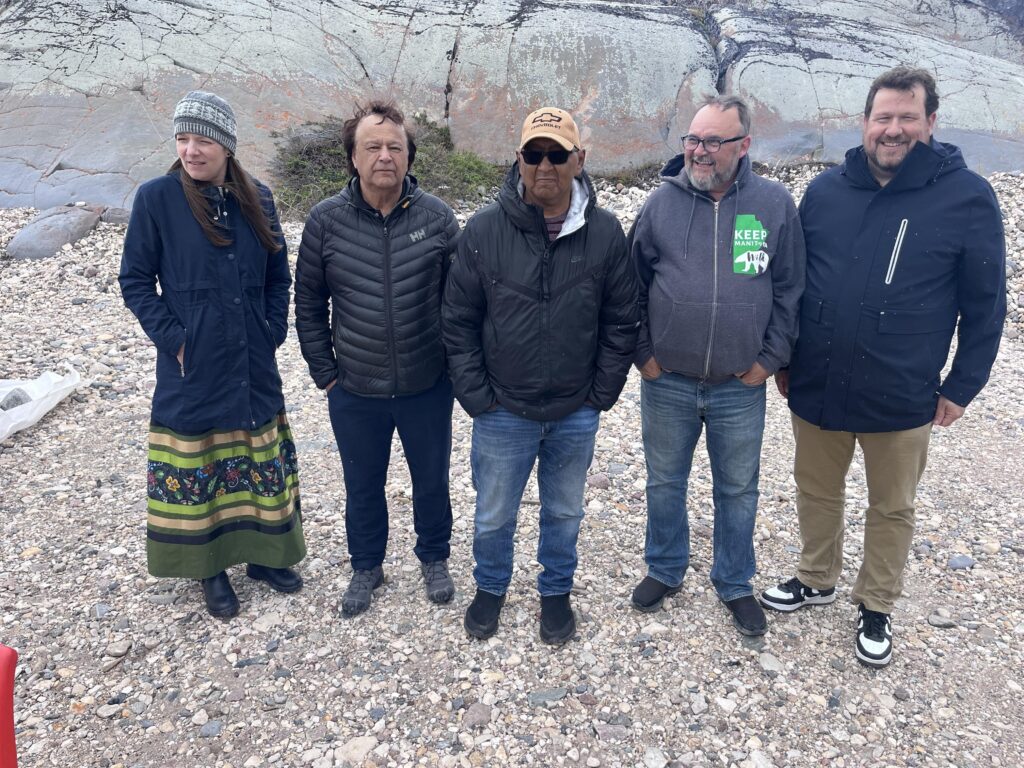
“We are so grateful to the knowledge keepers and community leaders who helped us honour the water and shared their respect and love for the people and wildlife who rely upon Hudson Bay,” said Ron Thiessen, Executive Director of CPAWS Manitoba.
“These waters are astonishingly beautiful and are teeming with life. There’s a reason why people from across the globe flock to Churchill. The bears, the belugas and the birds are awe-inspiring.”
The gathering was hosted by Ocean’s North and the Manitoba Chapter of the Canadian Parks and Wilderness Society. You may view the agenda here: https://cpawsmb.org/churchill-gathering/
Water Ceremony
Indigenous ceremonies were outlawed in Canada from 1895 to 1951 amid colonial efforts to eliminate Indigenous culture and force assimilation into Euro-Canadian society.
While many ceremonies were likely held privately, or in small groups, community elders said they could not recall a public water ceremony being offered to Churchill residents before June 20, 2024.
Ekosani to Susan Kobliski, Indigenous Knowledge Keeper from Nisichawayasihk Cree Nation, and Heather Spence-Botehlo, a Churchill Knowledge Keeper, for leading and organizing such a meaningful and moving event.
We are also grateful to the women representing Churchill’s Cree, Dene, Inuit and Métis communities who participated in the ceremony and to the fire keeper and drummers who shared their knowledge.
Generations of the present joined their ancestors to celebrate the spiritual and divine connections of the Big Water through ceremony, feast and sacred fire.

Visitors from York Factory First Nation, Tataskweyak Cree Nation, Fox Lake Cree Nation, War Lake First Nation and the Kitaskeenan Kaweekanawaynichikatek Indigenous Protected and Conserved Area initiative project team were among 65 people who gathered on the shoreline as the tide was coming in on Wednesday afternoon.
We were also joined by Mayor Spence, Minister Schmidt and Minister Simard.
Birds, Bears and Beluga Party at the Churchill Town Centre
Churchill Mayor Michael Spence helped us kick off the Bears, Birds and Belugas party at the town centre complex with a warm welcome and insightful remarks.
“The bears, belugas, and birds are important to us here in Churchill,” he said. “Looking at the possibility of a National Marine Conservation Area will require a process with many consultations. We must balance all the interests and opportunities.”
The attentive and engaged crowd of about 125 people enjoyed fantastic performances by the Churchill Northern Lights children’s choir and visiting musicians Ila Barker and Veronica Blackhawk on Wednesday evening.
Environment and Climate Change Minister Tracy Schmidt called the proposed national marine conservation area in Hudson Bay “a very exciting opportunity” for Manitoba. She also spoke of the government’s commitment to protect 30% of Manitoba by 2030.
“It’s an ambitious commitment, but I think it’s an achievable one,” Schmidt told the crowd. “And it’s going to be done by working together with local communities and with the Indigenous peoples of Manitoba.”
Minister of Sport, Culture, Heritage and Tourism Glen Simard spoke of Churchill’s exceptional tourism offerings and the optimism expressed by local business owners he met with earlier in the day.
“From my short time here, from the people I’ve interacted with, from the stories that I’ve heard, the future for Churchill is bright,” Simard told the crowd.
“Churchill is a once-in-a-lifetime opportunity for people,” he added. “What you have here is well known around the world. The offerings that you have here in terms of the outfitting experience that exists, the natural beauty, the ecology, the special ecosystems in Wapusk National Park is unmatched.”

CPAWS Manitoba Executive Director Ron Thiessen explained how a Parks Canada-led feasibility study of a potential a National Marine Conservation Area in Hudson Bay would involve consultations with regional rights holders, stakeholders, community leaders and residents.
“This process allows regional communities to help shape the proposed conservation area to ensure it aligns with regional priorities and values,” Thiessen said.
“Marine conservation areas can create new jobs such as Indigenous guardians or conservation officers, they can support the tourism industry and bring investments in infrastructure like the port and wildlife viewing facilities,” Thiessen added.
“They provide a balanced approach to conservation and sustainable economic development. Shipping is still allowed and is directed to corridors which will have the least amount of impact on marine life. But activities like offshore oil drilling, dumping and bottom trawling which can damage the marine environment are not allowed.”
Churchill Storywork Project
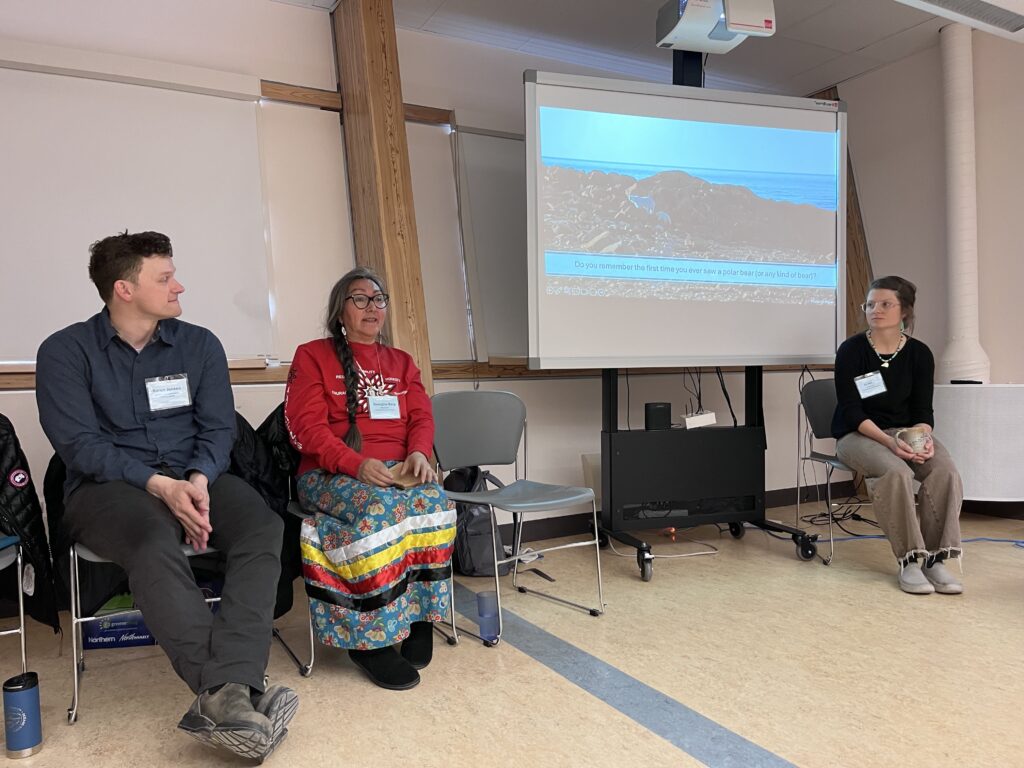
We opened the conference at the Churchill Northern Studies Centre on Wednesday morning with a smudge and prayer led by Knowledge Keeper Georgina Berg.
We spent the morning sharing stories about polar bears. About 45 people broke into pairs to tell the story of their first polar bear encounter and then shared them with the group. Then we learned about the Churchill Storywork Project – which is gathering Indigenous and local stories about polar bears and belugas.
Presentation on National Marine Conservation Areas
Elder Flora Beardy of York Factory First Nation helped us start the conference on Thursday in a good way with a prayer and words of wisdom. Churchill Knowledge Keeper Heather Spence-Botehlo shared her truth with those gathered, speaking of the impacts of colonialism on her family and of the significance of the site of Wednesday’s water ceremony. Churchill Mayor Michael Spence also shared welcoming remarks with the 55 or so people gathered at the Churchill Northern Studies Centre.

Carley Basler, a long-time Churchill resident who works for the Protected Areas Establishment Branch of Parks Canada, gave an extensive presentation on the process of establishing national marine protected areas, including examples of the extensive tourism industries servicing existing national marine protected areas in British Columbia and Quebec.
Flora Beardy, who is the project team leader for the Kitaskeenan Indigenous Protected and Conserved Area Initiative, welcomed efforts to protect Hudson Bay and said she would bring what she learned back to the leadership of Kitaskeenan’s five First Nations. She advised Parks Canada to engage in many conversations and meetings with regional residents to ensure they understand the process and the goals.
“Conservation is very important. Protection, whether it’s water or land,” she said. “Water is life. And anything that affects it – any pollution – that is going to affect us as people.”
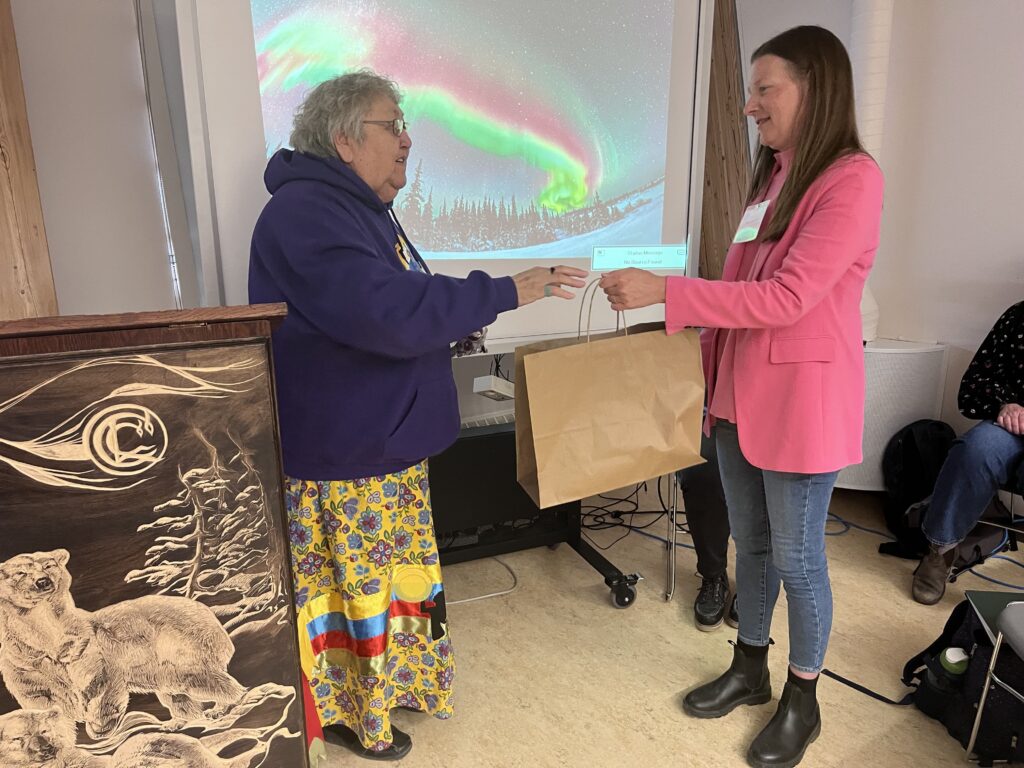
Environment and Climate Change Minister Tracy Schmidt welcomed Parks Canada’s inclusive approach to engaging Indigenous and regional communities in the process of designing national marine protected areas. In the past, conservation was about “drawing a line on a map and calling it a park,” she said. “I’m really proud to see our country and our province moving in a new direction,” Schmidt said.
“Whether it’s resource extraction and mining, whether it’s hydroelectric developments in our province or whether it’s protected and conserved areas, we want to make sure that those activities and those ventures are not only being led by the communities that are being impacted, but that those communities are also seeing the benefits of it.”
Presentation on Indigenous Tourism

Minister of Sport, Culture, Heritage and Tourism Glen Simard opened Thursday afternoon’s presentation by speaking of the provincial government’s commitment to supporting the expansion of tourism operations in Churchill and across Manitoba.
Darcie Guarderas, Indigenous Tourism Manitoba, then gave an extensive presentation on recent growth in Indigenous tourism operations and the strong demand for authentic experiences.
Exploring Hudson Bay by Boat and the Tundra by Foot
Getting out on the land and the water – feeling the tundra under your feet, smelling the salt in the air – is the best way to understand why it should be conserved.
We invited Churchill residents and visitors to join us on bird watching hikes across the tundra near the Churchill Northern Studies Centre on Thursday afternoon, a rare treat in a season when a bear guard is needed to step more than 30 feet away from a building or a vehicle when outside of the town of Churchill. About a dozen people joined on the first walk and 16 joined on the second hike.
The crunch of lichen and the springiness of peat moss made some of us feel like we were practically on another planet as we bounced across the wide open tundra, pausing to peer at the bright pink rhododendron and wee little white and yellow flowers.

We explored Hudson Bay by zodiac on Tuesday and Thursday evenings with out-of-town guests and Churchill community leaders. It was remarkable to see how much the water changed in just two days.
We were able to ride all the way into the bay on Tuesday evening, weaving between stunning chunks of drift ice until we found an ice floe that was large enough to explore on foot. Those who bent down and tasted the water in crystal blue puddles on top of the floe were thrilled to report it was fresh and tasty, though bitterly cold.
There was a lot more ice in the bay on Thursday, which kept us closer to shore but afforded us the incredible sight of a mirage that transformed the horizon into a wall of ice. We were also visited by three belugas, including a juvenile which approached the boats, its grey hide glistening in the golden rays of a late-setting solstice sun.
Why We Want to Protect Hudson Bay
Hudson Bay is losing ice faster than most parts of the Arctic. That doesn’t just make it harder for polar bears to hunt. It also means there will be more ships in Canada’s great inland sea.
The federal government has identified a huge swath of Hudson Bay that could be protected as a National Marine Conservation Area along the coast of Manitoba.
This could help ensure the survival of polar bears, belugas, sea birds and hundreds of other species which are under increasing pressure from the changes in Hudson Bay.
A National Marine Conservation Area could help maintain and enhance local livelihoods, bolster the region’s tourism industry, create new jobs and bring infrastructure investments.
Learn more here: https://cpawsmb.org/campaigns/hudson-bay/
